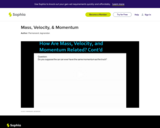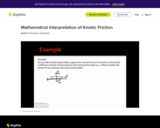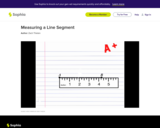
A video presentation illustrating the function of the lysosome inside a eukaryotic cell. [1:05]
- Subject:
- Science
- Material Type:
- Audio/Video
- Provider:
- Sophia Learning
- Date Added:
- 12/01/2023

A video presentation illustrating the function of the lysosome inside a eukaryotic cell. [1:05]

Look at a properly formatted bibliography page with formatting rules labeled, and then watch short video instructions for citing a book [0:34] and a website [0:54]. Finally, learn a formula for correctly citing articles.

This screencast tutorial introduces how to format film and television program sources in an MLA bibliography and provides a variety of examples. It is 1 of 3 in the series titled "MLA Bibliography: Film or Television Sources." [5:53]

A screencast lesson discussing how to write in-text citations using the MLA format. [5:28]

This screencast explains when and why to use active voice and passive voice in writing and how to change from one voice form to the other. It also includes links to additional web resources for changing voices. [3:08]

This lesson explains how to change a sentence from the passive voice to the active voice. [8:25]

A narrated presentation which illustrates how momentum is affected by mass and velocity. [3:16]

This tutorial provides a mathematical interpretation of kinetic friction as compared with a normal force. [4:27]

This lesson gives a mathematical interpretation of static friction. It is 1 of 2 in the series titled "Mathematical Interpretation of Static Friction." [8:44]

This lesson explains how to add and subtract matrices when it is possible to do so, noting matrix addition is commutative and associative. [2:59]

This lesson explains what the meaning is of two lines intersecting one another in the coordinate plane. [2:24]

A quick review lesson on how to measure mass for a scientific investigation. [1:35]

This video lesson [3:59] will walk you through using a ruler to measure the distance between endpoints. It is 1 of 10 in the series titled "Measuring a Line Segment." Students can answer review questions to assess their understanding of the topic.

This video lesson [2:15] will walk you through using a ruler to measure the distance between endpoints. It is 2 of 10 in the series titled "Measuring a Line Segment." Students can take a short review quiz when finished. CCSS.Math.Content.3.MD.B.4 Generate measurement data by measuring lengths using rulers marked with halves and fourths of an inch.

This video lesson [1:04] will walk you through using a ruler to measure the distance between endpoints. It is 3 of 10 in the series titled "Measuring a Line Segment." Students can answer review questions when finished. CCSS.Math.Content.3.MD.B.4 Generate measurement data by measuring lengths using rulers marked with halves and fourths of an inch.

This video lesson [1:15] will walk you through using a ruler to measure the distance between endpoints. It is 5 of 10 in the series titled "Measuring a Line Segment." CCSS.Math.Content.3.MD.B.4 Generate measurement data by measuring lengths using rulers marked with halves and fourths of an inch.

This video lesson [3:03] will walk you through using a ruler to measure the distance between endpoints. It is 8 of 10 in the series titled "Measuring a Line Segment." Students can answer review questions when finished. CCSS.Math.Content.3.MD.B.4 Generate measurement data by measuring lengths using rulers marked with halves and fourths of an inch.

Understand when objects have mechanical energy with this video lesson. Also learn the difference between potential and kinetic energy. The video also discusses the factors that influence both potential and kinetic energy using examples. [5:04]

Understand the structure and function of the powerhouse of the cell, the mitochondria. [2:40]

A screencast tutorial explaining how to do mathematical calculations to determine molarity. [9:14]